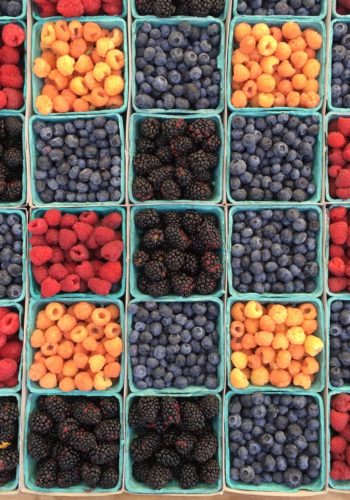
Eating Mindfully
As Americans, we tend to follow very busy work and activity schedules, and eating is just something we squeeze in wherever it fits. Busy moms and single folks too, often find themselves mindlessly gulping down breakfast while standing at the kitchen counter or multi-tasking while eating lunch. When we’re not eating on the go, we can find ourselves eating mindlessly for myriad other reasons. Do any of the following scenarios sound familiar?
Eating in a Rush
“Yikes! If anyone saw me scarfing this sandwich down and taking such big bites of salad, I’d be horrified! But I’ve got a meeting in five minutes, so if I’m going to eat, this is it.”
Eating Out of Boredom While Working from Home
You get up from your desk. “I wonder what’s in the fridge.” You open the fridge and stare. “I’m not really hungry.” You close the refrigerator. You start to walk back to your desk but turn around. You open the pantry. “Hmmm…what looks good? Aha! Granola Bars! I knew there were some in here!” You grab the granola bar, take it back to your desk, and eat it mindlessly while you resume work on your computer.
Trying to Avoid Giving in to Cravings
“I REALLY want some ice cream.” You grab some carrot sticks and eat them instead. “I STILL REALLY want some ice cream!” You grab a few plain crackers and eat them instead. “ I STILL REALLY WANT some ice cream!!!” You grab a cheese stick. “I STILL REALLY WANT SOME ICE CREAM!!!” You grab the pint of Ben and Jerry’s and dive in.
Making Sure Food Doesn’t Go to Waste
Parent: “Are you going to eat that?” Kid: “No. I’m full.” Parent: “Well, pass it here. I’ll eat it.”
Eating While Cooking
You start cooking dinner and think, “I’m so hungry from the day.” You eat 2, 3, 4 of the olives you’re placing on the table. “Mmmm, that was good.” You nibble on the grated cheese you’re putting in the salad and the baguette you’ve just sliced. Then, you think, “Ooh! That smells good!” You take a couple bites of the ground beef in the frying pan. You holler, “Dinner time!” to the family, and realize you’re not so hungry anymore. But it’s dinner time, so you go ahead and dish up.
Mindful Eating
Okay. Now that we’ve considered several examples of mindless eating, let’s talk about mindful eating!
Webster’s Dictionary defines mindfulness as, “the practice of maintaining a non-judgmental state of heightened or complete awareness of one’s thoughts, emotions, or experiences on a moment-to-moment basis.”
So, when eating mindfully, you’re actually walking through a series of steps before “putting fork to mouth”.
Step 1: Considering your motivation for eating
- At this first step, you are stopping to ask yourself why it is you want or need to eat. You might ask yourself such questions as:
- Am I physically hungry?
- Do I need to nourish my body in preparation for physical activity?
- Am I bored?
- Am I trying to relieve stress, sadness, or anxiety?
- Is this a meaningful part of a social engagement or interaction?
- Hmmm…is it just “time to eat”?
Step 2: Making a conscious decision to eat or not to eat
- In this second step, you are deciding whether to eat. Keep in mind when we are mindful, we are in a non-judgmental state of complete awareness. So, regardless of what you decide to do, you are acknowledging the reason, for example:
- You’re hungry
- Your body needs nourishment
- You want to enjoy a special dish your friend has prepared
- You have a craving
- You need comfort
- There’s nothing else to do
Step 3: Intentionally selecting the food you are going to eat
- Now, you must decide what you are going to eat. When you were first considering eating, you may have already had a specific food in mind; however, now that you’ve taken a moment to understand why you want or need to eat and you’ve made the decision to eat, you might have changed your mind about what you’re going to eat. You might be choosing a specific food because:
- You want to ensure you get enough fiber, protein, calcium, etc. today
- It is the best or the only food available for you to eat
- It is part of a meaningful social experience
- It is what are really craving right now
Step 4: Creating a proper environment in which to eat
- Without the proper environment, you cannot fully be aware of your experience, so you might consider:
- Removing the clutter from the breakfast bar, table, or wherever you’re planning to eat
- Sitting down with your family/friends (or by yourself if you’re alone) to eat
- Turning off the TV and turning on some music
- Dishing your food from the pan and placing it on an attractive plate
- Getting out of your car and sitting on a park bench in the sun
- Joining your co-workers in the cafeteria rather than sitting at your desk and responding to email while eating
Step 5: Experiencing the act of eating
- It’s time to appreciate the experience of eating. Yes, truly appreciate it. You are in the present. You have chosen to eat, chosen what to eat, and chosen how and where to eat. Hopefully, you will be thinking something like:
- I feel good because I am providing my body the nutrition it needs to stay healthy
- I am truly savoring and enjoying the food I am eating, and it is meaningful
- I am making a connection with others while eating this meal
- What I am eating is giving me satisfaction, and I do not feel guilty
Sound like a lot of work? It really isn’t. In fact, once mindful eating becomes a habit, these steps will take all of a minute or two, and you may find at times when you’re mindful, you actually decide not to eat!
Say what???
It’s true. When you walk yourself through these steps, you might very well decide you are planning to eat for the wrong reasons, there’s really something else you should be doing rather than eating, you are making poor food choices, or it’s just not the right time nor place to fully experience the act of eating.
Experiencing the Act of Eating
Breathe deeply and relax before eating
The culture that encourages you to go-go-go also promotes chronic mental/emotional stress. When we are in a “fight or flight” (sympathetic) nervous system mode, digestive secretions and peristalsis are reduced in order to support other body functions that promote survival. A few calming breaths and a conscious effort to sit and relax the body prior to and after eating can help improve digestion.
Slow Down, Sit Down, and Chew…then Chew Again
The average American chews each bite of food only a few times before swallowing it down hard. Often with several gulps of water as a chaser. Try to chew your food until it’s mostly liquid. This significantly reduces the work of your stomach. One thing that helps with that is simply putting down your fork between bites and leaning back in your chair (a relaxed posture). Not having that next bite prepared and waiting to be eaten psychologically allows you to slow down and chew your food well.
Drink most of your liquids between meals
Certainly, it’s fine to have some water along with your meals, but too much liquid during meals can dilute your stomach acid and make it less potent, leading to belching and bloating. Food can hang around in your stomach longer than it should and ferment. This can lead to gas, heartburn and indigestion. Focus on steady hydration in between meals and have only a small glass handy during meals to help clear the palate.
Stop eating before you’re “full”
Many people struggle with portion control. This is especially true when we eat at restaurants. Yes, the stomach will stretch. But only so far. Research shows better digestion for people who eat smaller meals. Note that this is not the same as “grazing”.
Don’t eat or drink anything for 3 hours before bedtime
Allowing ample time for digestion to occur before laying down can reduce symptoms such as heartburn and allows you to burn more fat during sleep.
Moving Forward Mindfully
Mindful eating is not something that just happens overnight. It is a habit, or rather several related habits, that take time to build, so don’t be discouraged if you find you lack consistency when you first start putting it into practice. Instead, congratulate yourself for your “hits”, and recognize the causes for your “misses”. As mindful eating becomes a natural part of what you do, you will likely see that you make healthier food choices, feel better physically, find it easier to manage your weight, and you enjoy eating without guilt!





